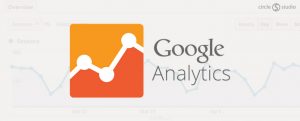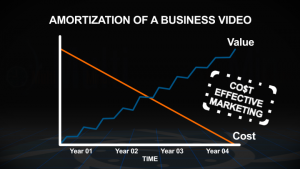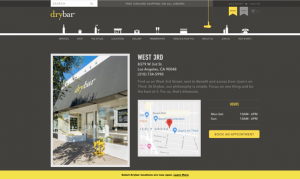Williamsburg Farmers Market has one person responsible for its marketing — and just about everything else. AI is making her life easier.
Generative artificial intelligence is not just for the enterprise. It’s not just for agencies, publishers and others in the content creation business. Used smartly, it can be a lifesaver for busy managers of small and even non-profit businesses.
Take Williamsburg Farmers Market in Virginia, for example. It’s open on Saturday from 8 a.m. to noon, almost but not quite year round. On the management side, it has one full-time employee, three part-time, plus some help for student volunteers.
The full-time employee is market manager Tracy Frey. Let’s see how busy she is.
Operations, vendor support, community outreach and sponsorships
“We’re a not-for-profit farmers market, so that makes us a little different,” Frey told us. “I’m responsible for the majority of the operations of the farmers market, so recruiting vendors and assisting them with their business — if they haven’t been inspected and need to be, I assist them in connecting them. They have to have liability insurance and those kinds of things, so I do a lot of hand-holding with very small businesses.”
Frey considers herself an incubator for the vendor’s businesses. “We actually visit every single farm and food processing operation prior to them joining our market. We ask them what their hopes, dreams and goals are and we try to get them to wherever that is.” That might mean, for example, supporting a small baker who hopes to graduate from selling products at the market to opening a bakery or coffee shop.
In addition to working with vendors, Frey is responsible for outreach to stakeholders and the community. “A lot of time is spent doing networking, whether it’s Chamber of Commerce or leadership classes.” She also does all the programming coordination: a children’s program, a music program and a chefs tent where people can learn how to turn the produce into meals.
In addition to working with the vendors and the community, Frey is responsible for creating partnerships with sponsors. “We don’t actively fundraise, but we do have sponsors and partners like the City of Williamsburg, Merchants Square, Colonial Williamsburg, and the Historic Virginia Land Conservancy.” We have to know who … stakeholders, justify to them. Insights touches, we collect that data just in case they do.
And then there’s marketing
Frey finds it amusing that she’s not only the market manager, but also the marketing manager for the market. “That’s my job too. I also do our web design. It’s critical for us to keep really good data. I analyze and study data. I can tell you the weather from our very first market up to last Saturday.”
The main marketing channel for the farmers market has been a weekly newsletter. “We know our demographics in Williamsburg — there’s still a generation that reads newspapers and magazines and likes newsletters.”
The email lists are grown organically rather than purchased and currently run to thousands of subscribers. This led to the market outgrowing its former email platform around 2006 or 2007. Because of the limit on the number of emails that could be sent simultaneously, Frey found she had to execute multiple, separate sends. She turned instead to the digital and email marketing platform Constant Contact.
“In the non-profit farmers market world, a lot of people were going for free options, but they didn’t quite meet our needs or have the support that we needed — and since we are quite a structured non-profit, with a strategic plan and a budget, we did have money for marketing. It seemed a really good use of that money to invest in newsletter software.“
Constant Contact offered more than just email distribution. “I love bells and whistles, especially if they make my life easier or I can reach more people,” said Frey. One feature Frey treasured was help in building out templates. “That’s not something that’s part of my skill-set or that I want to spend a whole lot of time on, though I realize it’s super-important. If I can streamline it and feel like I’m still doing a good job, that’s a perfect world.”
The weekly newsletter averages a very impressive 50% open rate. “It’s worth my time for the thousands of people who get it and the thousands who open it.” She also uses Constant Contact to schedule the publication of the newsletter on social media. Also: “We’re newly dipping our toes into Reels, which has been a lot of fun.” Student volunteers create multiple videos to post throughout the week.
Where the AI comes in
Constant Contact recently unveiled an AI Content Generator for emails and other marketing content. Frey was not slow to adopt it.
“At the beginning of my newsletter every week, I write a little paragraph or two about why you should come to the market this Saturday,” she explained. “I do that 52 weeks a year and it’s really hard to come up with a new thing every time. What I like about the AI is I can say something like ‘There are strawberries and onions this week, come visit us at the market,’ and it can make that into something very intelligent and fun-sounding.”
The AI will add content about things to do in the area, such as visiting Colonial Williamsburg. “It just takes my very short prompt and turns it into something that always makes me smile and I hope makes other people feel the same way. It takes the brainwork out of me trying to figure out how to say what I want to say.”
The AI is also good at turning prompts into calls-to-action, something Frey felt she always struggled with.
Constant Contact’s Content Generator does incorporate ChatGPT technology, but enhances that model by applying proprietary data and algorithms that are tuned to the needs of the specific Constant Contact customer. Given that ChatGPT has been made widely available by OpenAI, why use the Constant Contact version?
The answer is simple. “It’s really nice that it’s all in the same place that I’m creating my newsletter. If I can hit send five minutes sooner, that is amazing.”
Can Frey believe that a non-profit farmers market is leveraging AI in its marketing? “I am mesmerized by that every day,” she said.
The post How a non-profit farmers market is leveraging AI appeared first on MarTech.
MarTech(5)



